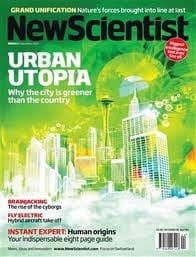I just received an email from ‘spaceoperaghost’:
‘Thought this might interest you if it hasn’t been emailed or otherwise brought to your attention already. CERN trapped antimatter! I suppose it’s too soon to start demanding warp drives and clean energy, but it’s still awesome.’
Yeah, I think we can safely assume that this is of interest to me.
Geneva, 17 November 2011. The ALPHA experiment at CERN1 has taken an important step forward in developing techniques to understand one of the Universe’s open questions: is there a difference between matter and antimatter? In a paper published in Nature today, the collaboration shows that it has successfully produced and trapped atoms of antihydrogen. This development opens the path to new ways of making detailed measurements of antihydrogen, which will in turn allow scientists to compare matter and antimatter.
Here’s a link to the article at CERN, and here’s the press release. It’s all rather dry, but then, I have become rather tired of ‘scientists’ who step over the line into politics, produce self-aggrandizing press releases and start making ludicrous predictions based on their work.
Update:
CERN created the first nine atoms of antihydrogen in 1995, and then started to produce atoms in large quantities in 2002, as part of the ATHENA and ATRAP experiments. This is the first time that scientists have been able to trap antihydrogen atoms for a long enough time to study them, keeping them at 9 degrees kelvin (-443.47 degrees Fahrenheit, -264.15 degrees Celsius), suspended in a magnetic field inside this Ghostbusters-style machine. The other reason why this is an important step is its potential to solve our need for unlimited energy. When antihydrogen touches matter—as shown in the image above—it releases a huge amount of energy. Many scientists speculate that antimatter may be the key to provide unlimited power capable of driving machines that are unthinkable right now. Eventually, it could be the stuff that could power new engines capable of taking us to the stars at near-light speed.
Um, so why the present press release?




